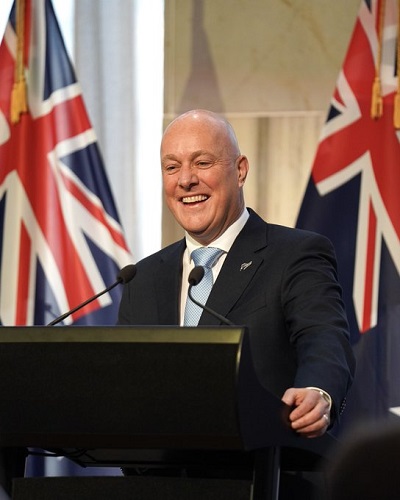Wellington, (Asian independent) Christopher Luxon officially became New Zealand’s new Prime Minister, as his cabinet was officially sworn in on Monday.
Luxon, New Zealand’s 42nd prime minister, confirmed to Governor-General Cindy Kiro he had the confidence to form a government in an elaborate ceremony with Maori karakia and the national anthem, reports Xinhua news agency.
A total of 20 cabinet ministers, eight ministers outside the cabinet, and two parliamentary under-secretaries were also formally appointed.
“We now have a responsibility to deliver for New Zealanders, to give them clear, demonstrable and measurable improvements in the quality of their lives,” Luxon told the ministers.
Labor Party leader Chris Hipkins officially resigned as prime minister to the governor-general on Monday.
The National Party, ACT New Zealand party and New Zealand First party announced the lineup for the new coalition government on November 24 in parliament after weeks of negotiations.
New Zealand First’s leader Winston Peters will be deputy prime minister for the first half of the three-year parliamentary term, and ACT’s leader David Seymour will be deputy prime minister for the second half of the term.
Peters will be the foreign minister and Seymour will be the minister for regulation assessing the quality of new and existing regulations.
The 20-strong cabinet will have 14 National ministers, three ACT ministers and three NZ First ministers.
National’s Nicola Willis will be the finance minister.
The new prime minister said the government will ease the cost of living and deliver tax relief, restore law and order, and deliver better public services.
The National Party won the general election on October 14, with the Labor Party to step down after six years in office.
However, with no party winning a majority of seats, the formation of a new government depended on the outcome of interparty negotiations to form a coalition government.
New Zealand uses the Mixed Member Proportional voting system to elect its parliament.
Under this system, the government is usually formed by two or more parliamentary political parties.








